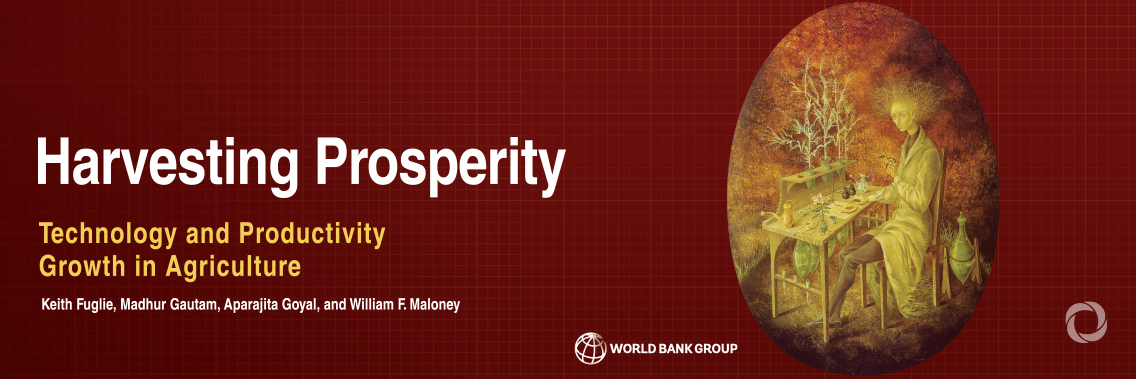Developing countries need to dramatically increase agricultural innovation and the use of technology by farmers, to eliminate poverty, meet the rising demand for food, and cope with the adverse effects of climate change, says a new World Bank report.
The relative stagnation in agricultural productivity in recent decades, particularly in South Asia and Africa where the vast majority of the poor live, underscores the need for new ideas to improve rural livelihoods. Renewed investment to increase new knowledge and ensure its adoption can help harness the large potential gains to be made in agricultural productivity and, hence, income, says the Harvesting Prosperity: Technology and Productivity Growth in Agriculture report.
It notes that nearly 80 percent of the world’s extreme poor live in rural areas, with most relying on farming for their livelihood. Poverty reduction efforts, thus, need an intensive focus on raising agricultural productivity, which has the largest impact of any sector on poverty reduction, roughly twice that of manufacturing.
“Boosting productivity in the agriculture sector can lead to more and better jobs while enabling more people to move off-farm to cities to pursue other opportunities. This requires comprehensive reform of domestic agricultural innovation systems, more effective public spending and the cultivation of inclusive agricultural value chains with an increased role for the private sector,” said World Bank Group Vice President for Equitable Growth, Finance and Institutions, Ceyla Pazarbasioglu.
The report examines the drivers and constraints to agricultural productivity and provides pragmatic policy advice. It notes that while in East Asia, crop yields have increased six-fold in the past four decades, contributing to the dramatic reduction in poverty in China and other East Asian countries, it has only doubled in Sub-Saharan Africa and parts of South Asia, with corresponding disappointing reductions in poverty.
In addition, climate change, together with a deteriorating natural resource base, will hit agriculture hard, impacting the poor and vulnerable, precisely in Africa and South Asia.
The key driver for increasing agricultural productivity and rising incomes is the adoption of innovative technologies and practices by farmers. This will enable farmers to raise yields, manage inputs more efficiently, adopt new crops and production systems, improve the quality of their products, conserve natural resources, and adapt to climate challenges.
However, the world is facing a widening research and development (R&D) spending gap, even as government funding for agriculture is reaching new heights. In developed countries, investment in agricultural R&D was equivalent to 3.25 percent of agricultural GDP in 2011, compared with 0.52 percent in developing counties. Among the latter group, Brazil and China invested relatively high amounts into agricultural R&D, while Africa and South Asia had the lowest spending relative to agricultural GDP. In fact, in half of African countries, R&D spending is actually declining.
Governments need to consider both public and private research and technology transfer in strengthening their overall innovation system.
Read and download the: Harvesting Prosperity: Technology and Productivity in Agriculture full report.
Original source: World Bank
Published on 16 September 2019

